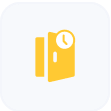
Enhancing University book meeting room Efficiency with Software Tools
Digital optimization of campus facilities is ushering in a new era of effectiveness for faculty, students, and visitors. The introduction of software tools has dramatically improved the process and usage of space rooms, allowing students, faculty, and staff to access university resources more efficiently.
Room scheduling, space management, team member room desk time tracking, employees that can easily book a meeting room, and more are all possible with the help of these programs. Universities may maximize resource utilization and student satisfaction with user-friendly digital solutions.
The Role of Software Tools in Digitally Optimized University Space Rooms
University facilities can benefit significantly from digital optimization in terms of both operational efficiency and the streamlining of various operations. Universities can save costs and time using software to streamline processes, enhance communication, and organize resources.
By automating formerly manual procedures, including those for room desk utilization, these software solutions help keep the quality of service uniform across the entire university.
By implementing this technology, universities can improve the learning experience for both students and teachers.
Here are a few ways that digitally optimizing campus resources can aid you:
#1. Acknowledge Challenges and Set Objectives
Determine whether you could improve parts of the current space room and facility management procedures by going digital. Consider what you want to accomplish, whether saving money on repairs, using less energy, or making your campus safer.
#2. Provide Aid for Facility Management
- Asset Management: Track and manage tangible and intangible assets across the university. This ensures that equipment, tools, and resources are efficiently utilized and maintained.
- Work Order Management: Centralize requests for repair, maintenance, or other tasks. This ensures timely attention to issues and allocates resources where they’re most needed.
- Preventative Maintenance Scheduling: Plan regular checks and maintenance to prevent potential problems. By anticipating and addressing issues before they escalate, you can save time and resources in the long run.
- Space Management (e.g., book meeting rooms): Organize and reserve spaces for classes, meetings, or events. This helps optimize space usage and avoid conflicts when personnel book meeting rooms.
- Resource Allocation: Distribute resources (like manpower, equipment, or funds) effectively across various departments or projects. This ensures that each university space room has what it needs to function smoothly.
Select flex room software solutions tailored to your university’s unique requirements, ensuring they integrate seamlessly with your current technology for cohesive operation.
#3. Managing Assets and Ensuring Their Upkeep
Use asset management software to keep tabs on anything from computers to desks to buildings. Adopt a digital maintenance management system to streamline the creation of work orders, monitor their status, and guarantee timely completion. Thanks to this, reduce downtime, speed up reaction times, and more effectively utilize available resources.
#4. Space Allocation and Timetabling
Use software that displays up-to-the-minute information on available space to maximize the efficiency of classrooms, laboratories, and other facilities. A digital scheduling system can help students and staff plan, like booking a space room, and avoid scheduling issues while increasing room and resource usage.
#5. Sustainable Energy Practices and Administration
Use energy management software to track energy use, spot wasteful patterns, and make necessary adjustments. Reduce energy costs by optimizing heating, cooling, lighting, and ventilation with occupancy sensors and control systems. Think about using sustainable practices and incorporating renewable energy.
#6. Foster Better and Faster Communication and Collaboration
Facilitate professor and student contacts with facilities management teams using various communication and collaboration platforms. Facility-related tasks can be better organized, tracked, and worked on with the help of project management software. Establish a unified method of informing people of facility-related problems, changes, and announcements.
#7. Examining and Reporting Data
Use data analytics software to track metrics, spot patterns, and base decisions on hard evidence. Optimize processes by analyzing information regarding resource utilization, maintenance tasks, energy usage, and occupancy rates. Produce reports consistently to evaluate KPIs and monitor development.
#8. Have Access On The Go
Create mobile apps that allow users to view and interact with facility-related data, such as floor plans, emergency procedures, service requests, and hotel reservations. Thus, it provides greater ease of use and availability for students, teachers, and staff.
#9. Coaching and Mentoring for Employees
Ensure that all academics, staff, and students involved in facilities management receive thorough instruction on the proper use of digital resources. Create lines of communication to answer questions, offer help like reserving a room desk online, and collect comments for future enhancements.
#10. Constant Digital Refinement
Keep track of how well your digital optimization is working. Collect user input, examine performance indicators, and make tweaks to improve effectiveness.
The Role of Digital Optimization Tactics In Academic Institutions Productivity
University environments can benefit significantly from the implementation of digital optimization technologies. Some of how these tactics can improve productivity are as follows:
#1. Administrative Simplification
Universities can automate and streamline several administrative procedures using digital optimization technologies. Digitizing administrative processes, including the following:
- Applying for admission
- Registering for classes
- Grading assignments
- Having a flex room, and
- Preserving records
Doing so can save time and reduce the likelihood of human error. Automating these processes helps save time, ensures correctness, and reallocates administrative resources to higher-priority needs.
#2. Improved Teamwork and Communication
Software tools can streamline communication and collaboration between students, teachers, and staff with the help of digital tools and platforms. Course materials, assignments, and grades can all be easily shared using an online LMS.
People in different locations can still work together in real-time thanks to virtual meeting platforms and collaboration tools. These resources lessen the requirement for in-person gatherings while raising accessibility and productivity.
#3. Customized Educational Opportunities
Universities can now provide students with individualized education thanks to digital optimization. Learning analytics and data-driven insights make personalized material and adaptive learning routes possible. A more individualized approach, like shows, boosts student engagement and academic success.
#4. Managing Assets Efficiently
Digital optimization measures can aid university resource management. Libraries and labs can significantly benefit from digital systems’ automated inventory management, equipment utilization tracking, and conflict-free scheduling. Monitoring and lowering overall campus energy consumption with an energy management system can save money and help the environment.
#5. Decision-Making Based on Data
Digital optimization processes can produce large amounts of data to make informed judgments. Data on student outcomes, enrollment trends, and resource utilization can help universities prioritize where to put their limited resources. Curriculum, resource allocation, and strategic planning can all benefit from the insights from data analysis.
#6. Distant and Hybrid Education
During the current and future COVID-19 pandemic, digital optimization measures have become essential. They allow schools to provide online and hybrid learning programs that maintain a consistent curriculum. Students and teachers benefit from the adaptability afforded by online lectures, virtual classrooms, and digital evaluations, as they can more efficiently respond to unforeseen events without sacrificing the quality of their education.
Key Benefits Of A Scheduling Software Tool For Colleges and Universities
It’s a wise expenditure to help the institution achieve its goals and save time and money. The benefits of a scheduling software tool for universities include:
- Increased productivity.
- A better learning environment for students.
- More effective use of available resources.
- More informed policymaking.
Universities and colleges can significantly benefit from scheduling software, boosting their productivity and efficiency. More of the significant advantages are as follows:
Benefit #1. Reduced Time Spent on Scheduling
Using scheduling software streamlines and expedites establishing and updating of class schedules. Saving time and effort over manual scheduling, it can manage complex scheduling needs such as room allocations, instructor availability, and student preferences.
Benefit #2. Betterment of The Educational Process
Scheduling software makes it simple for students to see what classes are available and offered and what times they meet, and to sign up for them online. Offering a straightforward interface and minimizing the potential for scheduling conflicts enhances the educational experience for students.
Benefit #3. Optimal Use of Available Resources
Colleges and universities can benefit from scheduling software by using their facilities better. It guarantees the optimal allocation of resources by considering elements like availability, capacity, and requisites for various courses and activities.
Benefit #4. Updates and Alerts Delivered Instantly
With the help of scheduling software, people with access can send any adjustments to the timetable or location of classes can be sent instantly to all relevant parties. Email, smartphone apps, and other forms of electronic communication are all utilizable to disseminate notifications and keep people in the loop.
Benefit #5. Compatibility With Existing Structures
Integration with preexisting systems is an essential feature of any scheduling software solution, including student information systems (SIS) and learning management systems (LMS). Combining the two systems allows seamless communication and reduces errors and inconsistencies in data.
Benefit #6. Improved Data Reporting and Analysis
Administrators can use the reporting and analytics features of scheduling software to examine data such as student enrollment, classroom capacity, teaching loads, and more. Data-driven decisions, optimized resource allocation, and improvement trends or hotspots can all benefit from these insights.
Benefit #7. Enhanced Staff Efficiency and Productivity
Scheduling automation frees up staff time for higher-value work like advising students, creating curricula, and providing academic assistance. As a result, employees can use their time and talents better, leading to greater productivity.
Benefit #8. Capacity for Change and Digital Evolution
Scheduling software makes it simple when there is a need to change a schedule. It is adaptable to meet changing needs and ensure minimal disruptions to the academic calendar due to changes in course offerings, instructor availability, or unforeseen events.
The Bottomline
When choosing software solutions for optimizing university facilities and space rooms, it is crucial to consider data protection, interaction with existing systems, scalability, and user experience. Investment in training and continuous support for workers using these tools is also critical for maximizing their benefits.



















































 Support
Support  Demo
Demo  Blog
Blog 


